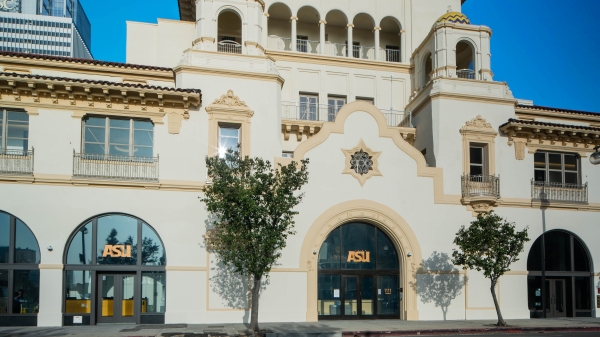Forget 'papers' — it's just 'news' now
Amidst news of industry mergers and cuts, ASU Cronkite professor talks about the opportunities, challenges facing journalism

Reports of several major shake-ups rocked the news industry this week, including an offer by media giant Gannett Co. to purchase Tribune Publishing Co., and the announcement that the New York Times was downsizing its staff abroad.
To talk about the business of news, ASU Now turned to Tim McGuire (left), the Frank Russell Chair of Journalism at the Walter Cronkite School of Journalism and Mass Communication. McGuire teaches courses on ethics and the balance of profit and the pursuit of the common good in journalism.
Question: Are newspapers putting off the inevitable? Is the business model unsustainable?
Answer: We certainly are heading toward some super-operations; obviously Gannett is attempting to consolidate a lot of the major markets. Despite their cuts and despite their challenges, the New York Times and the Washington Post will be around for a long time. You’ll have a lot more bifurcated media — you’ll have some big names and national powerhouses, and then you’ll have strong local operations, but we can’t get hung up on newspapers. Most of the things we knew as newspapers are going to be news operations: They will be multiplatform that will probably have a print edition some days of the week, they’ll be very prominent online, and they’ll be doing video. As a business model, they are going to morph into something we don’t really have a reference for. But right now most of those newspapers remain the dominant newsgathering force in their community. If they can adjust, they will continue to be that major news gathering force. We are not in a one-size-fits-all environment.
Q: Will we see those markets dominated by some of those larger media outfits?
A: The national newspapers will remain strong because they have a national base. The big regional newspapers are under real siege because mass is no longer the operative approach for news. Niches are, like specific subjects and interest areas. We’ve cut down resources for a paper like Phoenix or Minneapolis to cover an entire community, so what they will do most likely is look for partnerships to cover some of the more geographic and psychographic areas. Organizations who figure out how to effectively use partnerships are going to win. Papers with Gannett partnerships are covering national news with USA Today and distributing it throughout their newspapers. That’s a perfect example of a partnership that gains them leverage, then they can strictly do the local reporting.
Q: Do you see this as threatening independent journalism?
A: The market is going to decide that. You have a MinnPost in Minneapolis, you have a Voices of San Diego, you have a lot of upstart news organizations that are providing competition and thorough coverage of a market. Whenever there’s a vacuum, somebody fills it. I always use the example of the Downtown Devil. Seven or eight years ago, 12 students looked around when the Cronkite School moved downtown and said, you know, we need a publication down here that covers this campus. They threw five bucks each into the kitty and within a week they had a web publication up and running, and it still runs today. There are no barriers to entry anymore. If there’s a vacuum in a market, someone is going to fill it.
Q: Is there the opportunity for disruption?
A: There may well be on the drawing board a technological innovation that could make me look like an idiot. Twenty years ago, I predicted a lot of what has happened but you can’t predict all of it. We didn’t predict mobile or how powerful smartphones were going to be. That’s the big caveat — that there could be a technological breakthrough that changes the ballgame in a heartbeat.
More Law, journalism and politics

ASU Law students gain vital experience through Los Angeles location
Students at the Sandra Day O’Connor College of Law at Arizona State University may be concentrated in the school’s downtown Phoenix headquarters, but they have more choices than ever when it comes to…

Where AI and property law intersect
Artificial intelligence is a powerful tool that has the potential to be used to revolutionize education, creativity, everyday life and more. But as society begins to harness this technology and its…

Distinguished filmmaker to focus on media in Indigenous communities at ASU Cronkite School
By Lauren Boykins Renowned documentary filmmaker Marcos Colón will join Arizona State University’s Walter Cronkite School of Journalism and Mass Communication in the fall as the school’s Southwest…
